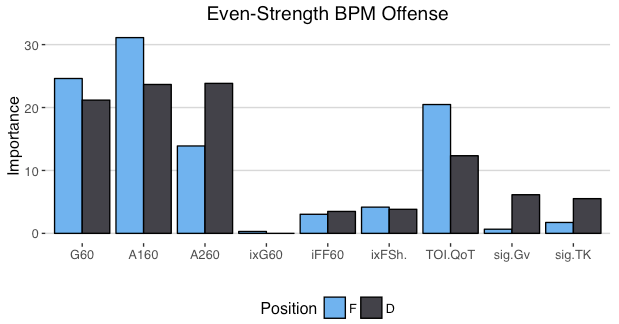Laineux
Registered User
- Aug 1, 2011
- 5,267
- 2,827
Here is 5vs5 offensive GAR/82 from last year and the components it uses, all weighed based on their ability to predict future goals.


Yeah if you combine everything there's not really anyone that close to McDavid in 5vs5 offense.

Yeah if you combine everything there's not really anyone that close to McDavid in 5vs5 offense.

